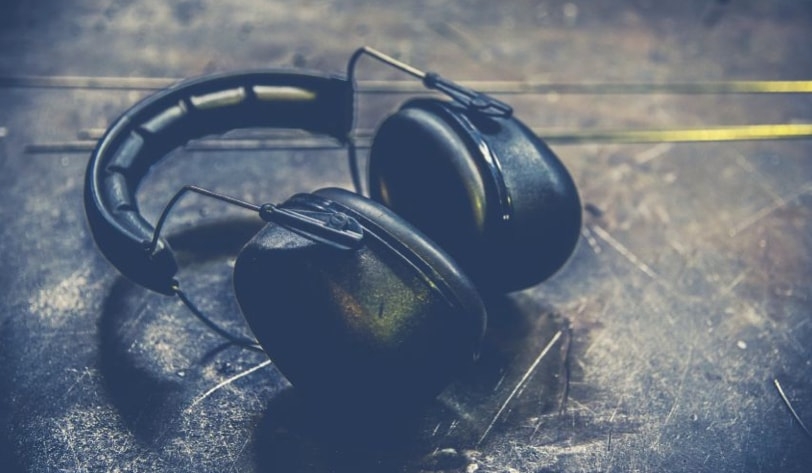
Focus on the noise: Preventing hearing loss in the workplace
May 10, 2018
By WSPS
 Photo: aon168/iStock/Getty Images Plus
Photo: aon168/iStock/Getty Images Plus May 10, 2018 – Results from a Statistics Canada health study, the Hearing loss of Canadians, 2012 and 2013, offer disturbing findings regarding adult hearing loss. Could you or your co-workers be among the one in five adults aged 19 to 79 who have mild hearing loss or more in at least one ear?
Here’s another: most people with measured hearing loss were unaware they had any hearing problems. Chances are, with time and continued exposure, the problem will get worse.
Protect the hearing of everyone in your workplace, including yourself, by leveraging the below tips. WSPS occupational hygiene specialist Warren Clements offers eight suggestions. But first, here are a few facts about noise exposure and hearing.
Forty-two per cent of Canadians aged 16 to 79 have worked or currently work in an environment where communicating to someone an arm’s length away requires speaking in a raised voice.
“That’s a noisy work environment,” says Clements.
Among these individuals, 22 per cent said they always use hearing protection while 39 per cent said they never do. The remaining percentage said they sometimes, often, or rarely, use hearing protection.
Noise exposure cuts across all industries. Furthermore, says Clements, all noise sources count, whether you’re at work, home or play. If you’re working with tools around the house, cutting wood with a chainsaw, or hunting with firearms, they too could contribute to your overall noise exposure.
Because hearing loss is a gradual process, continues Clements, many people may not realize their hearing is at risk until it’s too late. The resulting hearing loss can have severe emotional and social consequences, including social isolation, depression, limited mobility, and reduced income and employment opportunities.
It can even put people at greater risk of injury if they can’t hear back-up alarms and other warning sounds.
Here are eight ways to get started with a noise control program:
• Set up a noise control display;
• Schedule hearing loss prevention training and education, including hazards of noise exposure, audio-metric testing, and proper use of hearing protection on and off the jobs;
• Invite senior management on a noise-related inspection and discuss noise control options after;
• Make a public commitment to maintaining your hearing, at work and at home. Invite others to join you;
• Conduct an informal employee survey;
• If your workplace has a hearing loss prevention program in place, also promote some aspect of the program;
• Mark achievements to date;
• Update your noise exposure assessment. If you have not had a formal exposure assessment, start with an informal JHSC-partnered employee survey; and
• Announce program updates and new initiatives.
How will you know if your workplace needs a noise control program? Ask yourself and a sampling of employees the following questions.
• Do I need to raise my voice while I’m in the workplace?
• Do I have ringing in my ears?
• On my way home from work, do I need to increase the volume of my radio or digital music player higher than what it was on my way to work?
• When I’m in a noisy environment with competing noises – like at a restaurant or a social gathering – is it difficult to hear other people?
If you and the people you survey answer yes to these questions, look into conducting a more formal assessment.
Noise apps: What you need to know
Measuring noise levels with an app on your smartphone or tablet: What could be simpler? But are the measurements accurate? Could these apps be too good to be true?
“How useful the apps are depends in part on what you’re using them for,” says Clements. “Recording nuisance noise – a too-loud house party next door, or a sound system blasting from the apartment above you – may help back up your complaint to a by-law officer or building manager, but as for assessing noise levels at work, a higher level of accuracy is required.”
Understanding the decibels
According to a study done by Journal of Occupational and Environmental Hygiene, in certain situations smartphones, using an effective application and equipped with an external calibrated microphone can collect measurements just as accurately as a Type 2 sound level meter – a device typically used by trained professionals to take noise level readings.
Measurements must be accurate, especially if the noise level may be close to the province/territory’s maximum time-weighted noise exposure limit. Decibels are based on a logarithmic scale, not a linear scale. For a linear scale, like length, four metres are twice as long as two metres. For a logarithmic scale like decibels, twice as loud as 85 dBA is not 170 dBA. Using a 3dB exchange rate, it’s 88 dBA.
We are exposed to noise at work and at home, noise is everywhere. Up to 90 per cent of most production type workplaces, even warehousing, could have noise levels above the maximum allowable limit, estimated one WSPS occupational hygienist recently. “Using a smartphone app and an external microphone will give you data,” says Clements. “But the data might be misleading if you are not using a calibrated, external microphone. How can you make sound decisions if you don’t have the right information?”
Clements offers an alternative that doesn’t involve any technology. “If you’re a metre away and have to raise your voice to a very loud level to make yourself heard, this tells me the noise level may be around 85 db,” he says. “But this too is a rough, subjective guideline. Use it only as an indicator that further testing may be required.”
Workplace Safety & Prevention Services (WSPS) is a leader in providing impactful risk management solutions. WSPS offers unparalleled health and safety expertise, insight and solutions.
This article previously appeared in the May 2018 issue of Manufacturing AUTOMATION.